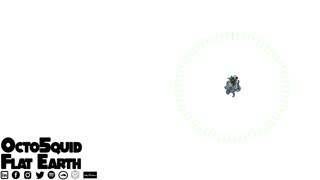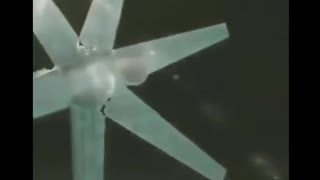Premium Only Content

The Flat Moon Over the Flat Earth
NASA and modern astronomy maintain that the Moon is a solid, spherical, Earth-like habitation which man has actually flown to and set foot on. They claim the Moon is a non-luminescent planetoid which receives and reflects all its light from the Sun. The reality is, however, that the Moon is not a solid body, it is clearly circular, but not spherical, and not in any way an Earth-like planetoid which humans could set foot on. In fact, the Moon is largely transparent and completely self-luminescent, shining with its own unique light.
The Sun’s light is golden, warm, drying, preservative and antiseptic, while the Moon’s light is silver, cool, damp, putrefying and septic. The Sun’s rays decrease the combustion of a bonfire, while the Moon’s rays increase combustion. Plant and animal substances exposed to sunlight quickly dry, shrink, coagulate, and lose the tendency to decompose and putrify; grapes and other fruits become solid, partially candied and preserved like raisins, dates, and prunes; animal flesh coagulates, loses its volatile gaseous constituents, becomes firm, dry, and slow to decay. When exposed to moonlight, however, plant and animal substances tend to show symptoms of putrefaction and decay.
In direct sunlight a thermometer will read higher than another thermometer placed in the shade, but in full, direct moonlight a thermometer will read lower than another placed in the shade. If the Sun’s light is collected in a large lens and thrown to a focus point it can create significant heat, while the Moon’s light collected similarly creates no heat. In the "Lancet Medical Journal,” from March 14th, 1856, particulars are given of several experiments which proved the Moon's rays when concentrated can actually reduce the temperature upon a thermometer more than eight degrees.
So sunlight and moonlight clearly have altogether different properties, and furthermore the Moon itself cannot physically be both a spherical body and a reflector of the Sun’s light! Reflectors must be flat or concave for light rays to have any angle of incidence; If a reflector’s surface is convex then every ray of light points in a direct line with the radius perpendicular to the surface resulting in no reflection.
-
 10:08
10:08
EricDubay
16 days agoThe Skull and Bones Secret Society
3.9K6 -
 4:59
4:59
0cto5quid
2 years ago $0.09 earnedFlat Earth
5273 -
 14:38
14:38
Op Freedom
2 years agoA FLAT Earth Presentation
3.35K48 -
 1:29
1:29
Op Freedom
2 years agoFlat Earth Hungary
2.34K18 -
 LIVE
LIVE
G2G Gaming Channel
2 hours agoMonday Smite Fix! #RumbleTakeOver #RumbleGaming
398 watching -
 LIVE
LIVE
Jeff Ahern
1 hour agoMonday Madness with Jeff Ahern (6am Pacific)
689 watching -
 LIVE
LIVE
PudgeTV
13 hours ago🔵Vigilante Nights - Batman: Arkham Origins | Live Playthrough Pt. 5
133 watching -
 15:21
15:21
Degenerate Jay
16 hours ago $7.55 earnedThe Mystery Of Silent Hill 2's Strange Photos Has Finally Been Solved
36.4K9 -
 9:47
9:47
Cooking with Gruel
19 hours agoMastering Potato Gratin
20.7K27 -
 8:34
8:34
GBGunsRumble
14 hours agoGBGuns Range Report 24NOV24
15.4K4